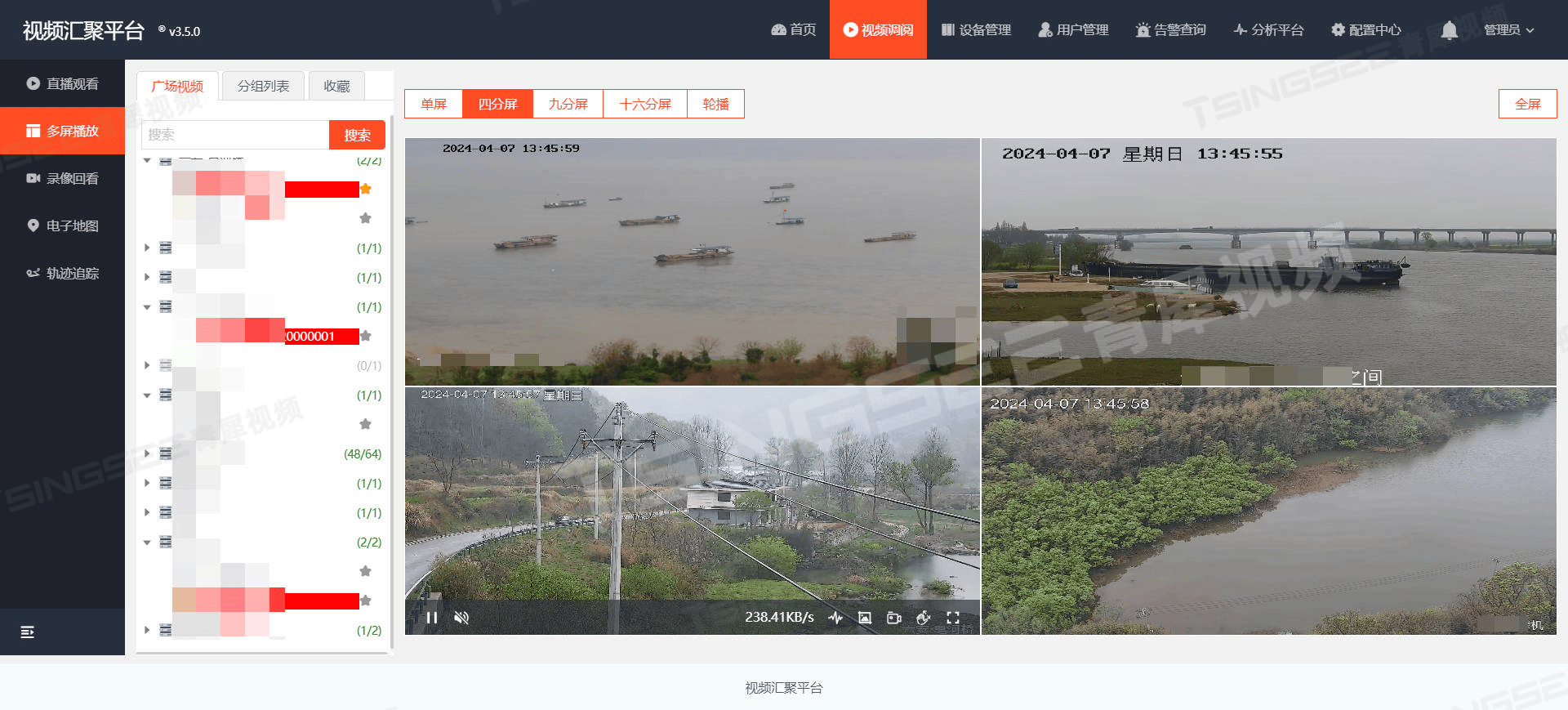PCIe驱动开发(3)— 驱动设备文件的创建与操作
一、前言
在 Linux 中一切皆为文件,驱动加载成功以后会在“/dev”目录下生成一个相应的文件,应用程序通过对这个名为“/dev/xxx” (xxx 是具体的驱动文件名字)的文件进行相应的操作即可实现对硬件的操作。
二、创建设备文件
PCIe设备属于字符设备,我们按如下步骤创建一个字符设备:
/* 1、Request device number */ret = alloc_chrdev_region(&hello_pci_info.dev_id, 0, 1, "hello_pcie");/* 2、Initial char_dev */hello_pci_info.cdev.owner = THIS_MODULE;cdev_init(&hello_pci_info.char_dev, &hello_pci_fops);/* 3、add char_dev */cdev_add(&hello_pci_info.char_dev, hello_pci_info.dev_id, 1);/* 4、create class */hello_pci_info.class = class_create(THIS_MODULE, "hello_pcie");if (IS_ERR(hello_pci_info.class)) {return PTR_ERR(hello_pci_info.class);}/* 5、create device */hello_pci_info.device = device_create(hello_pci_info.class, NULL, hello_pci_info.dev_id, NULL, "hello_pcie");if (IS_ERR(newchrled.device)) {return PTR_ERR(newchrled.device);}
其中需要定义一个设备文件操作函数结构体,可以暂时定义为如下所示:
/* device file operations function */
static struct file_operations hello_pcie_fops = {.owner = THIS_MODULE,
};
将上述创建一个字符设备的操作加在hello_pci_init函数里,同时hello_pci_exit添加对应的卸载操作:
static void __exit hello_pci_exit(void)
{if(hello_pci_info.dev != NULL) {cdev_del(&hello_pci_info.char_dev); /* del cdev */unregister_chrdev_region(hello_pci_info.dev_id, 1); /* unregister device number */device_destroy(hello_pci_info.class, hello_pci_info.dev_id);class_destroy(hello_pci_info.class);}pci_unregister_driver(&hello_pci_driver);
}
然后编译加载驱动,便可以看到在/dev下有我们创建的hello_pcie设备了:

三、添加文件操作函数
如下所示,添加文件的open,close,write,read函数:
#include <linux/kernel.h>
#include <linux/module.h>
#include <linux/pci.h>
#include <linux/init.h>
#include <linux/module.h>
#include <linux/errno.h>
#include <linux/cdev.h>
#include <linux/device.h>#define HELLO_PCI_DEVICE_ID 0x11e8
#define HELLO_PCI_VENDOR_ID 0x1234
#define HELLO_PCI_REVISION_ID 0x10static struct pci_device_id ids[] = {{ PCI_DEVICE(HELLO_PCI_VENDOR_ID, HELLO_PCI_DEVICE_ID), },{ 0 , }
};static struct hello_pci_info_t {dev_t dev_id;struct cdev char_dev;struct class *class;struct device *device;struct pci_dev *dev;void __iomem *address_bar0;atomic_t compute_running;wait_queue_head_t r_wait;
} hello_pci_info;MODULE_DEVICE_TABLE(pci, ids);static irqreturn_t hello_pci_irq_handler(int irq, void *dev_info)
{struct hello_pci_info_t *_pci_info = dev_info;uint32_t irq_status;// get irq_stutasirq_status = *((uint32_t *)(_pci_info->address_bar0 + 0x24));printk("hello_pcie: get irq status: 0x%0x\n", irq_status);// clean irq*((uint32_t *)(_pci_info->address_bar0 + 0x64)) = irq_status;// get irq_stutasirq_status = *((uint32_t *)(_pci_info->address_bar0 + 0x24));if(irq_status == 0x00){printk("hello_pcie: receive irq and clean success. \n");}else{printk("hello_pcie: receive irq but clean failed !!! \n");return IRQ_NONE;}atomic_set(&(_pci_info->compute_running), 0);wake_up_interruptible(&(_pci_info->r_wait));return IRQ_HANDLED;
}/** @description : 打开设备* @param - inode : 传递给驱动的inode* @param - file : 设备文件,file结构体有个叫做private_data的成员变量* 一般在open的时候将private_data指向设备结构体。* @return : 0 成功;其他 失败*/
static int hello_pcie_open(struct inode *inode, struct file *file)
{printk("hello_pcie: open dev file.\n");init_waitqueue_head(&hello_pci_info.r_wait);return 0;
}/** @description : 关闭/释放设备* @param - file : 要关闭的设备文件(文件描述符)* @return : 0 成功;其他 失败*/
static int hello_pcie_close(struct inode *inode, struct file *file)
{printk("hello_pcie: close dev file.\n");return 0;
}/** @description : 向设备写数据 * @param - filp : 设备文件,表示打开的文件描述符* @param - buf : 要写给设备写入的数据* @param - cnt : 要写入的数据长度* @param - offt : 相对于文件首地址的偏移* @return : 写入的字节数,如果为负值,表示写入失败*/
static ssize_t hello_pcie_write(struct file *filp, const char __user *buf, size_t cnt, loff_t *offt)
{int retvalue;unsigned char databuf[4] = {0, 0, 0, 0};uint32_t compute_value;retvalue = copy_from_user(databuf, buf, cnt);if(retvalue < 0) {printk("hello_pcie: write failed!\n");return -EFAULT;}atomic_set(&hello_pci_info.compute_running, 1);compute_value = ((databuf[0]) | (databuf[1]<<8) | (databuf[2]<<16) | (databuf[3]<<24));*((uint32_t *)(hello_pci_info.address_bar0 + 0x08)) = compute_value;return 0;
}/** @description : 从设备读取数据 * @param – filp : 要打开的设备文件(文件描述符)* @param – buf : 返回给用户空间的数据缓冲区* @param – cnt : 要读取的数据长度* @param – offt : 相对于文件首地址的偏移* @return : 读取的字节数,如果为负值,表示读取失败*/
static ssize_t hello_pcie_read(struct file *filp, char __user *buf, size_t cnt, loff_t *offt)
{int ret;uint32_t compute_result = 0;/* 加入等待队列,当有按键按下或松开动作发生时,才会被唤醒 */ret = wait_event_interruptible(hello_pci_info.r_wait, 0 == atomic_read(&hello_pci_info.compute_running));if(ret)return ret;compute_result = *((uint32_t *)(hello_pci_info.address_bar0 + 0x08));printk("hello_pcie: get compute_result: %0d\n", compute_result);/* 将按键状态信息发送给应用程序 */ret = copy_to_user(buf, &compute_result, sizeof(int));return ret;
}/* device file operations function */
static struct file_operations hello_pcie_fops = {.owner = THIS_MODULE,.open = hello_pcie_open,.release = hello_pcie_close,.read = hello_pcie_read,.write = hello_pcie_write,
};static int hello_pcie_probe(struct pci_dev *dev, const struct pci_device_id *id)
{int bar = 0;int ret;resource_size_t len;ret = pci_enable_device(dev);if(ret) {return ret;}len = pci_resource_len(dev, bar);hello_pci_info.address_bar0 = pci_iomap(dev, bar, len);hello_pci_info.dev = dev;// register interruptret = request_irq(dev->irq, hello_pci_irq_handler, IRQF_SHARED, "hello_pci", &hello_pci_info);if(ret) {printk("request IRQ failed.\n");return ret;}// enable irq for finishing factorial computation*((uint32_t *)(hello_pci_info.address_bar0 + 0x20)) = 0x80;return 0;
}static void hello_pcie_remove(struct pci_dev *dev)
{// disable irq for finishing factorial computation*((uint32_t *)(hello_pci_info.address_bar0 + 0x20)) = 0x01;free_irq(dev->irq, &hello_pci_info);pci_iounmap(dev, hello_pci_info.address_bar0);pci_disable_device(dev);
}static struct pci_driver hello_pci_driver = {.name = "hello_pcie",.id_table = ids,.probe = hello_pcie_probe,.remove = hello_pcie_remove,
};static int __init hello_pci_init(void)
{int ret = pci_register_driver(&hello_pci_driver);if(hello_pci_info.dev == NULL){printk("hello_pci: probe pcie device failed!\n");return ret;}/* 1、Request device number */ret = alloc_chrdev_region(&hello_pci_info.dev_id, 0, 1, "hello_pcie");/* 2、Initial char_dev */hello_pci_info.char_dev.owner = THIS_MODULE;cdev_init(&hello_pci_info.char_dev, &hello_pcie_fops);/* 3、add char_dev */cdev_add(&hello_pci_info.char_dev, hello_pci_info.dev_id, 1);/* 4、create class */hello_pci_info.class = class_create(THIS_MODULE, "hello_pcie");if (IS_ERR(hello_pci_info.class)) {return PTR_ERR(hello_pci_info.class);}/* 5、create device */hello_pci_info.device = device_create(hello_pci_info.class, NULL, hello_pci_info.dev_id, NULL, "hello_pcie");if (IS_ERR(hello_pci_info.device)) {return PTR_ERR(hello_pci_info.device);}return ret;
}static void __exit hello_pci_exit(void)
{if(hello_pci_info.dev != NULL) {cdev_del(&hello_pci_info.char_dev); /* del cdev */unregister_chrdev_region(hello_pci_info.dev_id, 1); /* unregister device number */device_destroy(hello_pci_info.class, hello_pci_info.dev_id);class_destroy(hello_pci_info.class);}pci_unregister_driver(&hello_pci_driver);
}module_init(hello_pci_init);
module_exit(hello_pci_exit);
MODULE_LICENSE("GPL");
MODULE_INFO(intree, "Y");四、编写用户程序
编写用户测试程序testapp.c如下:
#include "stdio.h"
#include "stdint.h"
#include "unistd.h"
#include "sys/types.h"
#include "sys/stat.h"
#include "fcntl.h"
#include "stdlib.h"
#include "string.h"int main(int argc, char *argv[])
{int fd, retvalue;char *filename = "/dev/hello_pcie";uint32_t data_val = 6;int read_val;/* 打开驱动设备文件 */fd = open(filename, O_RDWR);if(fd < 0){printf("file %s open failed!\n", filename);return -1;}/* 向/dev/hello_pcie文件写入数据 */retvalue = write(fd, &data_val, sizeof(int));if(retvalue < 0){printf("Open %s Failed!\n", filename);close(fd);return -1;}read(fd, &read_val, sizeof(int));printf("factorial computation result : %0d \n", read_val);retvalue = close(fd); /* 关闭文件 */if(retvalue < 0){printf("file %s close failed!\r\n", filename);return -1;}return 0;
}五、运行测试
编译加载驱动,

使用如下命令编译测试程序:
gcc testapp.c
然后运行测试程序,我们可以看到计算得到的阶乘结果为720,即6*5*4*3*2*1=720,符合预期结果




















